Share This Page!
Mice are motivated to find warm places to nest as temperatures start to drop. During this time of year, it’s common for them nesting inside homes. This causes many homeowners to panic and question how the mice found their way inside! There are many variables when comes to locating an entry point as many homes aren’t built the same. On this page we will go over the most common places and places that homeowners often overlook.
- Open Cinderblock
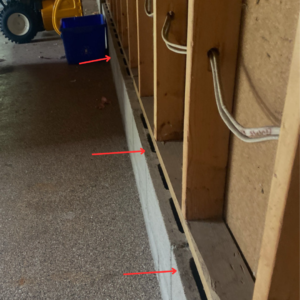
A commonly overlooked entry point is open cinderblocks in the garage. (This is only regarding homes with attached garages.) You can find open cinderblocks inside unfinished or partially finished garages. The cinderblock foundation in the garage is connected to the foundation of the rest of the home. Once a mouse enters inside the cinderblock foundation they can navigate throughout the foundation of the entire home. Mice will build nests inside the foundation and also use it as a place to store food for winter.
2. Driveway Skirts
In places with cold winters and hot summers construction materials such as cement can crack and settle. When this happens the gap between the driveway skirt and driveway slab expands. When this gap becomes large enough pests such as mice, chipmunks, and snakes will use it to access the space underneath the garage slab. There is commonly an entry point into the foundation that is below the slab.

3. Brick Wall Facades
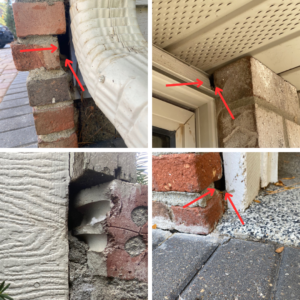
Similarly to the driveway skirt brick wall facades can also shift, crack, and settle. This happens because they are not built to provide the home with structural support. They are strictly built for decoration. This causes them to break and crack in places where the brick touches other materials (siding, soffits, trim boards, etc.). This gives mice access to go behind the walls. From there they can get into the attic or foundation.
4. Corners
Corners around homes are variable areas for mice. Construction materials are often not cut flush with the foundation or siding. Homes that have vinyl siding, have corner pieces called corner caps. These pieces are hollowed out and give mice access to the top of the foundation and sometimes even the attic.
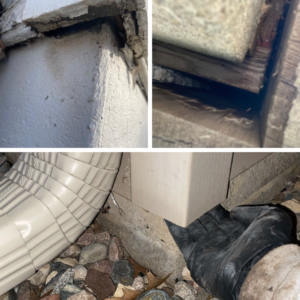
5. Bay Windows

Bay windows on homes are susceptible to entry points. There are almost always entry points underneath them. In the photo, there is an entry point under the back of the window. Under the window, there can be gaps between the foundation and the window. It is also common to find entrances in the corners. It’s possible for there to be cracks or signs of rotting on the board below the window. The rotting can be caused by homeowners piling up landscaping rock, mulch, or soil above the window. These materials will often touch the wood of the window which causes the wood to become water-damaged. Water-damaged wood is easy for mice to chew through.
6. AC Lines and Utility Lines
Around a home, there are multiple pipes and electrical lines that go directly into the house. It’s common for these places to not be sealed correctly or not sealed at all. When the mice get access to the inside they use the pipes and electrical wires to navigate their way to the attic and unfinished rooms inside the home.
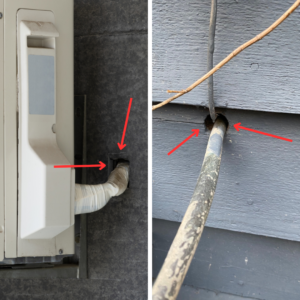
7. Vents
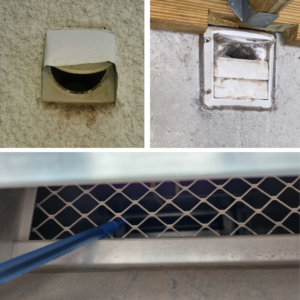
Dryer vents are commonly left open due to access flint filling up in between the hinges. A clean dryer vent should be shut when the dryer is off and only open while the dryer is running. Other vents around the home can also be susceptible to entry points. There can be gaps behind the vents or through the grates. A grate needs to have 1/4-inch squares to keep mice out. Switching out a dryer vent with a Lambro dryer vent would erase the possibility of the flap staying open. You can buy one on Amazon by clicking here
8. Roof line
Mice can climb homes that have brick, stucco, or wood siding. They can also access the roof if trees or bushes touch the roof line. Vines growing on the side of the home also create easy access. Once on the roof mice often find ways into the attic through gables, around brick chimneys, and vents.





